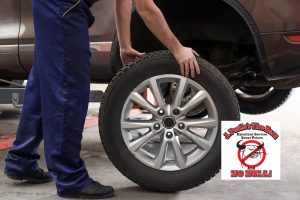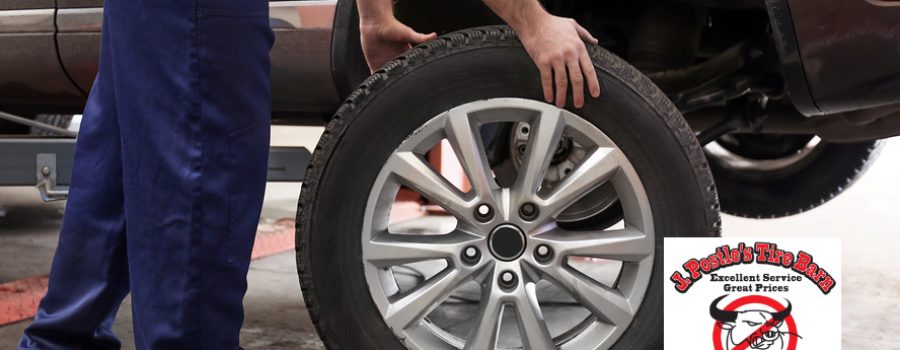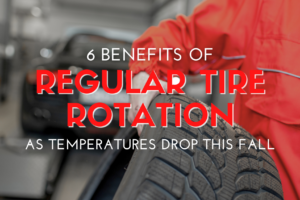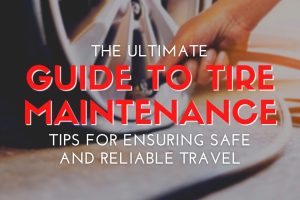Tire Balancing vs. Tire Alignment: What is the Difference?
 Your tires are the connection between the road and your vehicle and are extremely important for your vehicle’s safety and fuel efficiency. Because your wheels are constantly being shifted as you make turns on the road, uneven wear and tear must be checked and corrected from time to time.
Your tires are the connection between the road and your vehicle and are extremely important for your vehicle’s safety and fuel efficiency. Because your wheels are constantly being shifted as you make turns on the road, uneven wear and tear must be checked and corrected from time to time.
Financially, this might be a difficult decision for you, but it’s important to seek a qualified repair center such as Postle’s Tire Barn to provide a long-term plan for wheel alignment and balancing that will save you money down the road.
Why Both Balancing And Alignment Are Needed
Tires seem to be perfectly round and symmetrical when they are new, but they actually have minute imperfections in both shape and weight distribution. In many cases, the tread can be as much as one-eighth of an inch thicker on one side than the other. As tire treads wear down, this mass distribution imbalance can become even more pronounced. Tires are initially balanced when they are mounted on your vehicle, but periodic re-balancing is necessary.
Tire alignment is not the same thing as tire balancing. Tire alignment involves correcting the forward-facing position of the tires through mechanical settings on your vehicle. Your wheels normally point forward so that the front of the tires roll exactly in the direction you want to drive. Over time, your wheels can shift slightly to the right or left. This result might be a swaying sensation or a side-pull when driving. Periodic wheel alignment is necessary in order to prevent more severe damage to the vehicle and loss of control by the driver.
Wheel Alignment
Wheels that are out of alignment can actually work against each other. This increases wear and tear on your tires, suspension, axle, or wheel mounts. It also decreases fuel mileage because more and more energy is being wasted through friction and heat buildup.
Signs of misaligned tires might include tire vibration, pulling to the right or left uneven tire wear, and an off-center steering wheel. The latter refers to a steering wheel that is slightly turned to the side even when the car is rolling straight down the highway. Repair specialists look at three things when examining tire alignment. These are camber, caster, and toe. Camber refers to the wheel angle, and caster refers to the wheel pivot angle. Toe is the angle of the tires themselves in relation to the rest of the vehicle.
If any of these are out of alignment, alignment correction is needed. Proper alignment increases fuel mileage, reduces uneven tire wear, and improves the overall handling of the vehicle.
Tire Balancing
New tires have small metal weights attached to your wheel. (Even new tires and wheels from the manufacturer are seldom perfectly round and balanced without the use of wheel weights.)
These are placed by a tire technician at strategic locations to balance out any imperfections in the tire’s mass distribution. The tire is mounted on a spinning machine to check for vibration. The weights are moved along the perimeter of the wheel until the spin is smooth. As tires become worn down and the tread becomes uneven, the vehicle may begin to vibrate, especially at higher speeds.
This is the most common sign of tires in need of balancing. Balancing your tires is generally inexpensive and should be performed soon if one or more of the weights has moved or has fallen off, or if you notice a vibration in your tires as you are driving.
Proper maintenance of your vehicle’s tires and wheels ensures longer tire life and safer driving for you. Contact Postle’s Tire Barn if you have any questions concerning your car’s performance as it relates to your wheel alignment and tire balancing.
Contact Us
Postle Tire Barn is a family owned and operated tire and auto shop located in Tuscaloosa, AL. We’ve been serving the tire and automotive needs of the West Alabama area for more than 35 years. For more information, please email us at [email protected].





Recent Comments